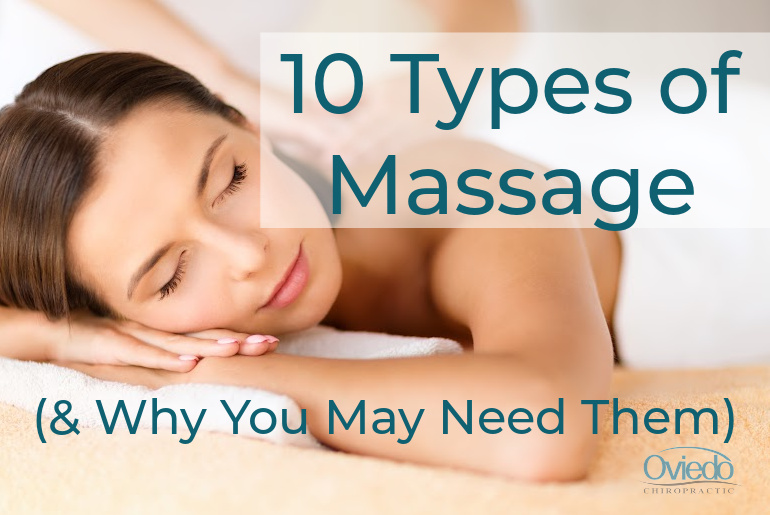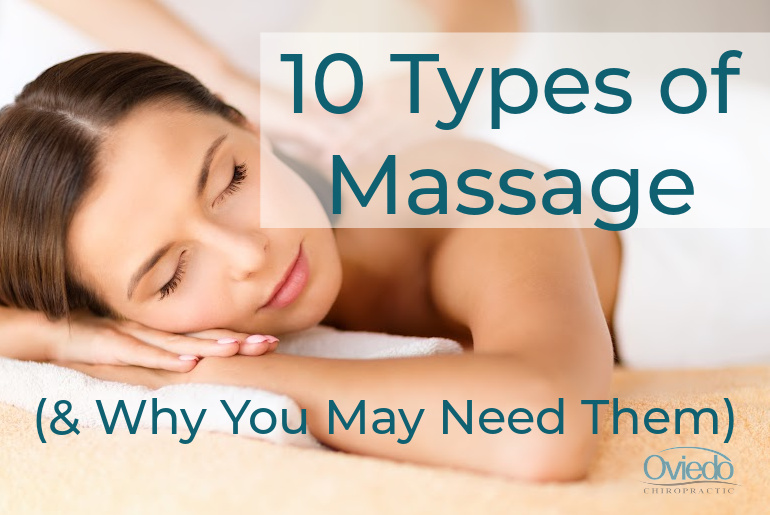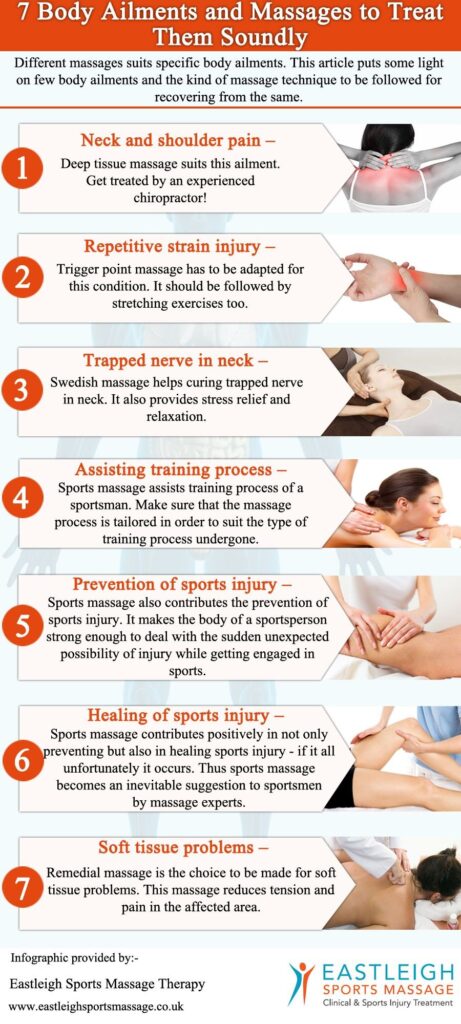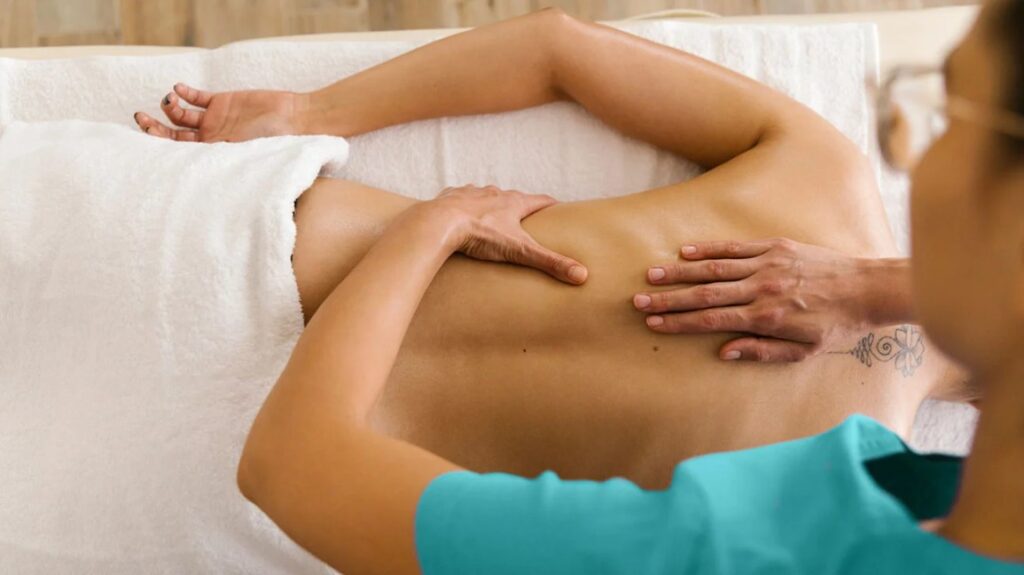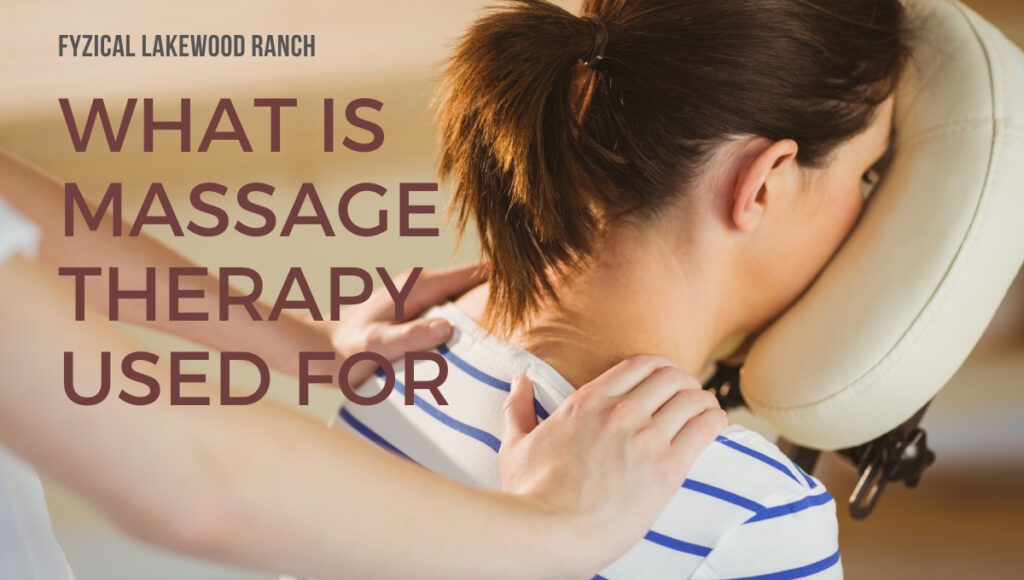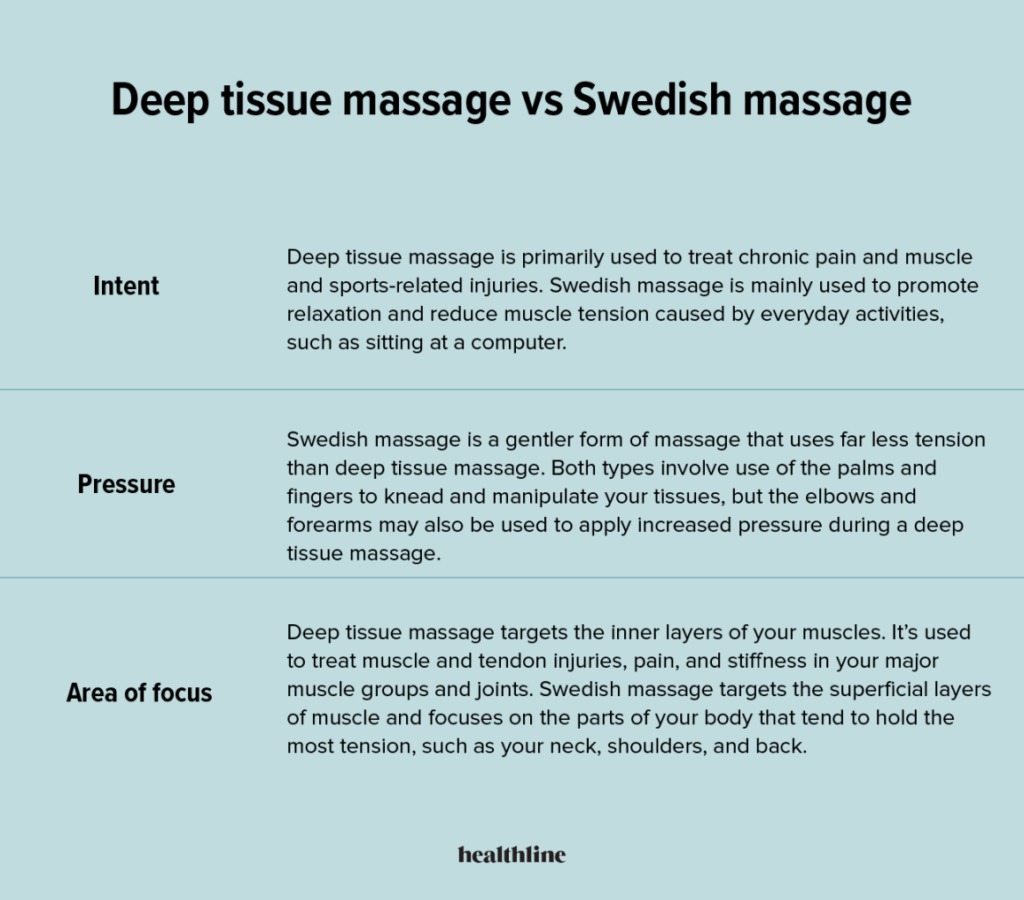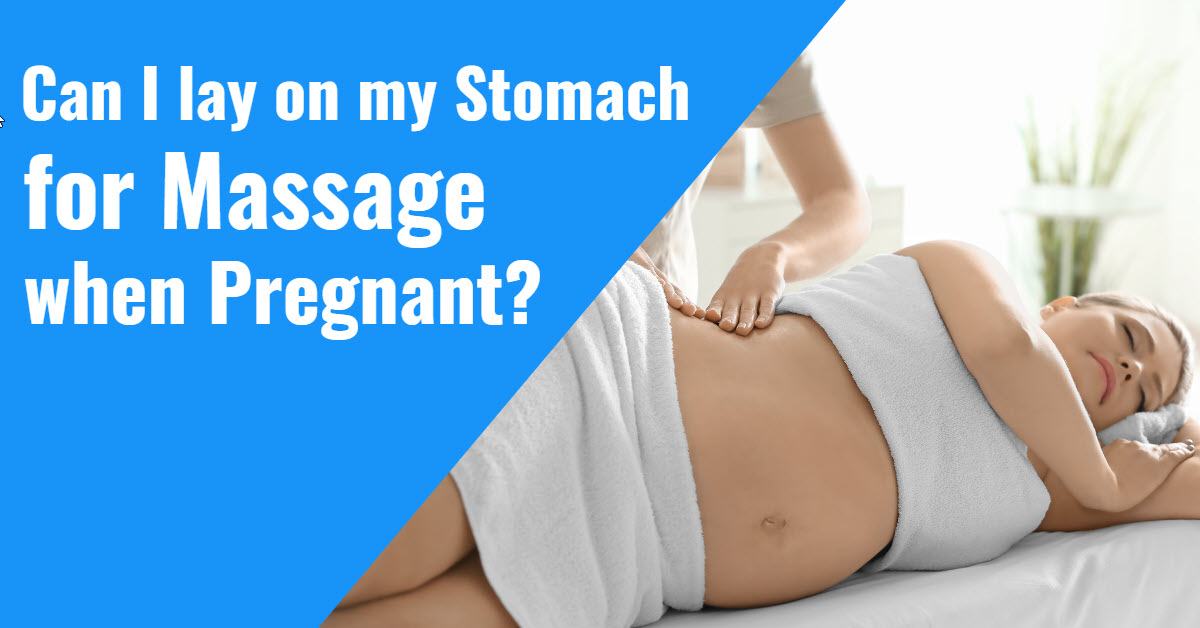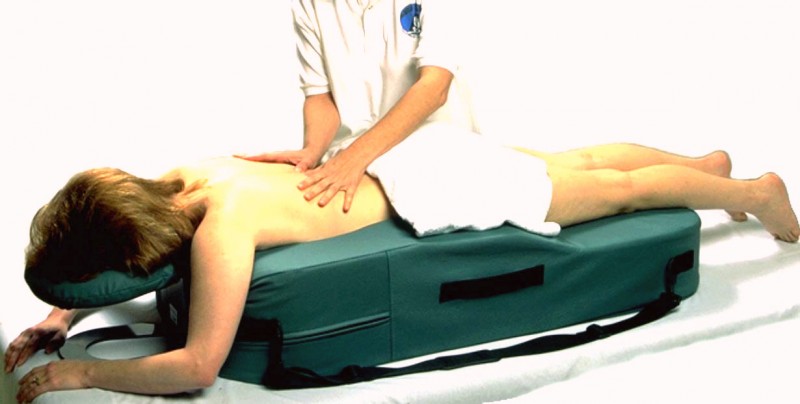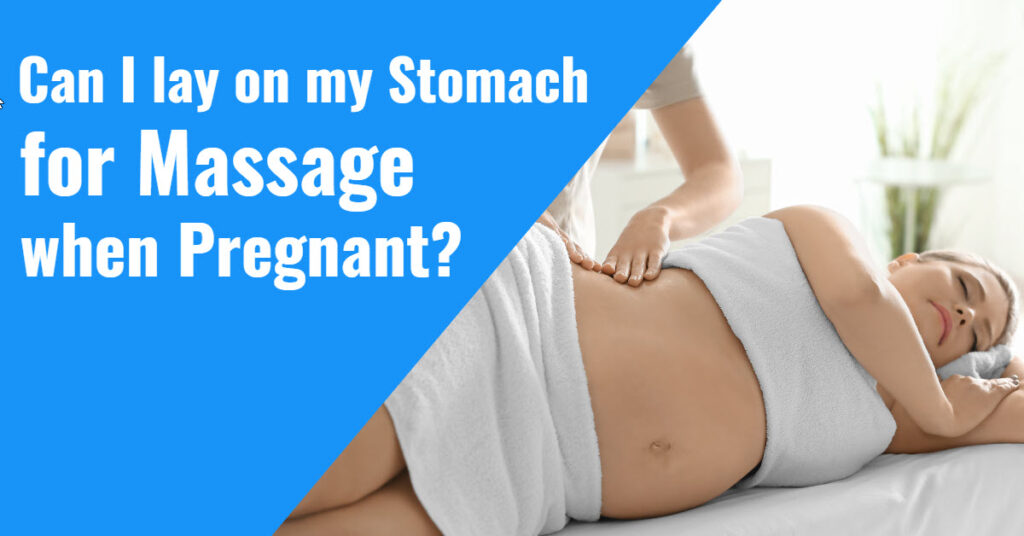Imagine a world where all your stress and tension simply melt away, leaving you feeling relaxed and rejuvenated. Well, that’s exactly what the different types of massage techniques offer. From the gentle strokes of Swedish massage to the more intense pressure of deep tissue massage, each technique has its own unique benefits to cater to your individual needs. Whether you’re looking to ease muscle soreness, reduce anxiety, or simply indulge in some much-needed self-care, discovering the various massage techniques is like uncovering a hidden treasure trove of ultimate relaxation. So kick back, close your eyes, and let us take you on a journey through the wonderful world of massage.
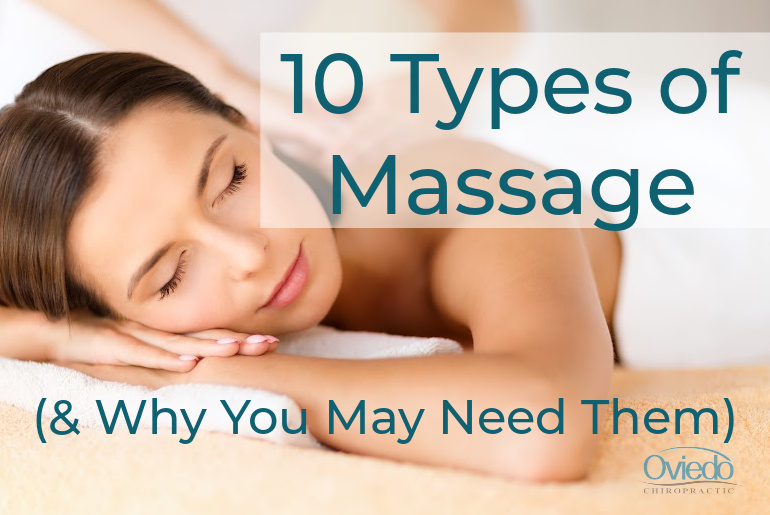
This image is property of chiropractorinoviedo.com.
Swedish Massage
Swedish massage is one of the most popular types of massages, known for its relaxation and stress-relieving benefits. It involves a combination of different techniques that work together to provide a soothing and rejuvenating experience.
Effleurage
Effleurage is the first technique used during a Swedish massage. It involves long, sweeping strokes that are applied with a gentle pressure. This technique helps to warm up the muscles, increase circulation, and relax the body.
Petrissage
Petrissage is the next technique used in Swedish massage. It involves kneading, rolling, and squeezing motions applied to the muscles and soft tissues. This technique helps to release tension and knots in the muscles, improve flexibility, and promote relaxation.
Friction
Friction is another technique used in Swedish massage that involves deep, circular movements applied with pressure. This technique targets specific areas of tension and aims to break down adhesions in the muscles and improve mobility.
Tapotement
Tapotement is a percussive technique used in Swedish massage that involves rhythmic tapping or pounding motions. This technique helps to stimulate the muscles, increase blood flow, and invigorate the body. It is often used towards the end of a massage to awaken the senses.
Vibration
Vibration is a technique in Swedish massage that involves the therapist using their hands or fingertips to create a trembling or shaking movement. This technique helps to relax the muscles, relieve tension, and promote a sense of overall well-being.
Deep Tissue Massage
Deep tissue massage is a therapeutic massage that focuses on targeting the deeper layers of muscles and connective tissues. It is commonly used to treat chronic pain, injuries, and postural issues.
Stripping
Stripping is a technique used in deep tissue massage where the therapist applies deep, gliding pressure along the length of the muscle fibers using their thumbs, fingers, or elbows. This technique helps to break up adhesions, release tension, and restore proper muscle alignment.
Friction
Friction is also used in deep tissue massage to target specific areas of tension. The therapist applies deep, circular movements with their fingers or thumbs, using intense pressure. This technique helps to increase blood flow, break down scar tissue, and reduce pain.
Trigger Point Therapy
Trigger point therapy is a technique used in deep tissue massage to relieve localized areas of pain and discomfort. The therapist applies direct pressure to trigger points, which are tight knots or bands of muscle fibers. This technique helps to release muscle tension and alleviate pain.
Myofascial Release
Myofascial release is a technique used in deep tissue massage that focuses on stretching and releasing the fascia, the connective tissue that surrounds the muscles and organs. The therapist uses gentle pressure and stretching movements to release tension and improve mobility.
Sports Massage
Sports massage is a form of deep tissue massage that is specifically tailored to athletes and individuals involved in sports activities. It helps to improve athletic performance, prevent injuries, and aid in the recovery process. Sports massage techniques may include a combination of deep tissue massage, stretching, and joint mobilization.
Hot Stone Massage
Hot stone massage is a luxurious and deeply relaxing massage technique that involves the use of heated stones. The stones are typically made of smooth basalt and are heated to a comfortable temperature before being placed on specific areas of the body.
Heating the Stones
The first step in a hot stone massage is heating the stones. The stones are usually heated in a water bath or a professional stone heater to ensure they reach the optimal temperature. The therapist carefully monitors the stones to ensure they are not too hot for the client’s comfort.
Placement
Once the stones are heated, they are placed strategically on specific areas of the body. The therapist may place them along the spine, on the hands and feet, or on other areas with tension or discomfort. The heat from the stones helps to relax and warm the muscles, allowing for deeper massage.
Massage Techniques
During a hot stone massage, the therapist uses a combination of Swedish massage techniques and the stones to provide a deeply relaxing and therapeutic experience. The therapist may use the stones as an extension of their hands to apply gentle pressure and smooth, gliding movements.
Cold Stones
In addition to using heated stones, cold stones may also be utilized during a hot stone massage. Cold stones are typically made of marble and are used to reduce inflammation, soothe sore muscles, and invigorate the body. The alternating use of hot and cold stones creates a unique and refreshing experience.
Aromatherapy Massage
Aromatherapy massage combines the therapeutic benefits of massage with the use of essential oils. These oils, extracted from various plants, have different properties that can promote relaxation, reduce stress, and alleviate specific ailments.
Essential Oils
Essential oils are the key component of aromatherapy massage. They are highly concentrated plant extracts that possess unique therapeutic properties. Different essential oils have different effects, such as lavender for relaxation, peppermint for clarity, and eucalyptus for respiratory relief.
Blending
Creating a blend of essential oils is an important aspect of aromatherapy massage. The therapist carefully selects and combines different oils to tailor the blend to the client’s needs and preferences. The blend is then diluted in a carrier oil, such as grapeseed or sweet almond oil, before being applied to the skin.
Inhalation
In addition to applying essential oils topically, inhalation is another way to experience their benefits. The therapist may diffuse the essential oils in the room or provide a hot towel infused with the oils for the client to inhale. Inhalation helps to relax the mind, improve mood, and enhance the overall massage experience.
Application
During an aromatherapy massage, the therapist applies the diluted essential oil blend to the client’s skin using different massage techniques. The oils are absorbed into the bloodstream through the skin, where they can provide their therapeutic effects. The combination of massage and aromatherapy creates a deeply relaxing and rejuvenating experience.
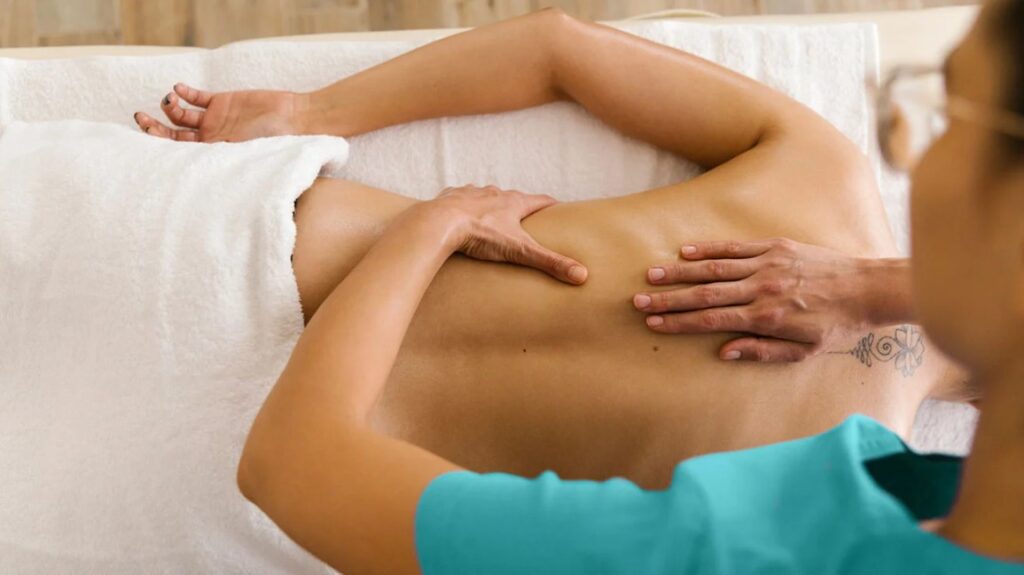
This image is property of i0.wp.com.
Thai Massage
Thai massage is a traditional massage technique that combines acupressure, stretching, and assisted yoga postures. It originated in Thailand and is known for its therapeutic and energizing benefits.
Passive Stretching
One of the key elements of Thai massage is passive stretching. The therapist guides the client through a series of stretching movements, using their hands, elbows, knees, and feet. These stretches help to improve flexibility, release tension, and increase range of motion.
Acupressure
Acupressure is another important aspect of Thai massage. The therapist applies pressure to specific points along the body’s energy lines, known as sen lines. This helps to release blockages and restore the flow of energy, promoting healing and balance.
Compression
Compression is a technique used in Thai massage where the therapist applies steady pressure to specific areas of the body using their palms, thumbs, or elbows. This helps to relieve muscle tension, improve circulation, and stimulate the body’s natural healing process.
Joint Mobilization
Thai massage also includes joint mobilization techniques. The therapist gently moves and manipulates the client’s joints to improve flexibility, relieve stiffness, and promote a sense of relaxation and well-being.
Shiatsu Massage
Shiatsu massage is a form of Japanese bodywork that aims to balance the body’s energy flow, known as Qi. It involves applying rhythmic finger pressure, stretching, and manipulation techniques to specific points along the body’s energy channels, known as meridians.
Finger Pressure
Finger pressure is the fundamental technique used in shiatsu massage. The therapist uses their fingers, thumbs, and palms to apply deep, rhythmic pressure to specific points on the body. This helps to release tension, restore energy flow, and promote overall well-being.
Stretching and Manipulation
In addition to finger pressure, shiatsu massage also includes stretching and manipulation techniques. The therapist may gently stretch and rotate the client’s limbs, perform joint mobilization movements, and apply gentle traction to release tension and improve flexibility.
Meridian Therapy
Meridian therapy is a key principle of shiatsu massage. The therapist focuses on specific meridians, or energy channels, that correspond to different organs and systems in the body. By restoring balance and harmony to these meridians, shiatsu massage helps to promote health and well-being.
Soft Tissue Release
Soft tissue release is another technique used in shiatsu massage. The therapist applies pressure to specific areas of muscle tension and then stretches the muscle fibers in different directions. This helps to release knots, improve circulation, and restore balance to the muscles.

This image is property of publish.purewow.net.
Sports Massage
Sports massage is a therapeutic massage technique that is tailored to athletes and individuals involved in sports activities. It helps to enhance athletic performance, prevent injuries, and aid in the recovery process.
Pre-Event Massage
Pre-event massage is performed before a sports event or activity. It aims to prepare the muscles and the athlete for optimal performance. The therapist uses quick, stimulating techniques to warm up the muscles, increase circulation, and improve flexibility.
Post-Event Massage
Post-event massage is performed after a sports event or activity. It focuses on reducing muscle soreness, promoting relaxation, and aiding in the recovery process. The therapist uses slower, calming techniques to help flush out metabolic waste, reduce inflammation, and restore balance to the body.
Restorative Massage
Restorative massage is performed during training or as part of a maintenance routine. It helps to prevent injuries, reduce muscle tension, and enhance overall performance. The therapist uses a combination of techniques tailored to the athlete’s specific needs and goals.
Rehabilitative Massage
Rehabilitative massage is used to treat sports-related injuries and aid in the recovery process. It focuses on reducing pain, increasing range of motion, and promoting healing. The therapist uses specific techniques to target injured areas and help restore functionality.
Pregnancy Massage
Pregnancy massage, also known as prenatal massage, is a gentle massage technique specifically designed for pregnant women. It helps to alleviate common discomforts associated with pregnancy and promote a sense of relaxation and well-being.
Side-Lying Position
During a pregnancy massage, the client lies on their side with the support of pillows and bolsters for comfort. This position allows the therapist to effectively and safely massage the client while avoiding any pressure on the abdomen or other sensitive areas.
Gentle Swedish Techniques
Pregnancy massage often incorporates gentle Swedish massage techniques, such as effleurage and light kneading. These techniques help to increase circulation, relieve muscle tension, and reduce swelling. The therapist adjusts the pressure and techniques to meet the client’s comfort level and specific needs.
Pregnancy-Specific Adjustments
A pregnancy massage includes specific adjustments to accommodate the physiological changes that occur during pregnancy. The therapist may use additional pillows for support, avoid certain areas or techniques, and ensure proper positioning to ensure the safety and comfort of the client.
Benefits and Safety Considerations
Pregnancy massage offers numerous benefits for expectant mothers, such as reduced back pain, improved sleep, reduced swelling, and decreased anxiety and stress. However, it is important to consult with a qualified prenatal massage therapist and inform them of any specific concerns or medical conditions to ensure a safe and effective treatment.

This image is property of aberdeenchiropractic.files.wordpress.com.
Reflexology
Reflexology is a massage technique that involves applying pressure to specific points on the feet, hands, and ears. These points are believed to correspond to various organs, systems, and body parts, and stimulating them can help promote healing and balance the body.
Foot Reflexology
Foot reflexology is the most common form of reflexology. The therapist applies pressure to specific points on the soles, tops, and sides of the client’s feet using their fingers, thumbs, or specialized tools. This helps to stimulate the corresponding organs and body systems, release tension, and improve overall well-being.
Hand Reflexology
Hand reflexology targets the reflex points on the hands. The therapist applies pressure to specific points using their fingers, thumbs, or a reflexology tool. Hand reflexology can be used in conjunction with foot reflexology or as a standalone treatment. It can be particularly beneficial for individuals who may have foot sensitivities or limitations.
Ear Reflexology
Ear reflexology, also known as auricular reflexology, involves applying pressure to specific points on the ears. These points correspond to different organs and body parts. The therapist may use their fingers, thumbs, or specialized tools to stimulate these points. Ear reflexology is often used as a complementary treatment to foot and hand reflexology.
Benefits and Applications
Reflexology has been practiced for centuries and is believed to offer a wide range of benefits, including relaxation, stress reduction, pain relief, improved circulation, and enhanced overall well-being. It can be used as a standalone treatment or in combination with other massage techniques to address specific conditions or concerns.
Trigger Point Therapy
Trigger point therapy is a technique used to alleviate pain and discomfort caused by trigger points, which are tight knots or bands of muscle fibers. Trigger points can cause referred pain, limited range of motion, and muscle weakness. Trigger point therapy helps to release these points and restore proper muscle function.
Identifying Trigger Points
The first step in trigger point therapy is identifying the trigger points. The therapist uses their hands or specialized tools to locate the areas of muscle tension and tenderness. They may ask the client to provide feedback on the location and intensity of the discomfort.
Applying Sustained Pressure
Once the trigger points are identified, the therapist applies sustained pressure to these points using their fingers, thumbs, or elbows. The pressure is applied gradually and maintained for a period of time to allow the muscle fibers to release and relax. This helps to alleviate pain and restore normal muscle function.
Releasing Muscular Tension
As the sustained pressure is applied, the therapist may also use techniques such as stretching, heat or cold therapy, or deep breathing exercises to further release muscular tension. These additional techniques can enhance the effectiveness of the trigger point therapy and promote relaxation.
Inactivation and Disruption
Trigger point therapy aims to inactivate and disrupt the trigger points, leading to their release and the restoration of normal muscle function. The therapist may use various techniques, including direct pressure, stretching, and ischemic compression, to achieve this goal. Regular sessions may be recommended to achieve long-lasting results.
In conclusion, there are various types of massage techniques available, each offering unique benefits and therapeutic effects. From Swedish massage for relaxation to deep tissue massage for targeting specific issues, and from hot stone massage for luxurious pampering to Thai massage for stretching and acupressure, there is a massage technique to suit every individual’s needs and preferences. Whether you’re seeking deep relaxation, pain relief, or improved overall well-being, massage therapy provides a holistic approach to health and self-care. So, take the time to explore these different types of massage techniques and discover the one that speaks to you and your body.

This image is property of images.squarespace-cdn.com.
